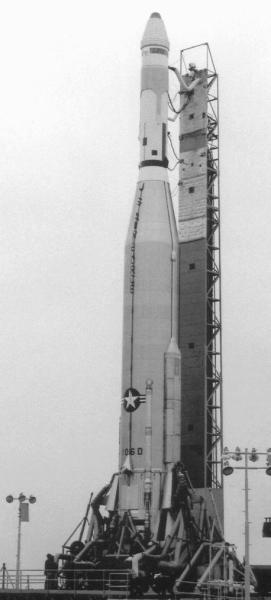
Ranger Program / Agena Rocket Vehicles Collection, Accession 2013-0014, National Air and Space Museum, Smithsonian Institution. Should you wish to use NASM material in any medium, please submit an Application for Permission to Reproduce NASM Material, available at Permissions Requests Material is subject to Smithsonian Terms of Use. The following types of material are included: a Lockheed internal publication and memos eight by ten inch, mostly black and white, Jet Propulsion Laboratory (JPL) and NASA photos name badges newspaper articles, JPL press releases Cape Canaveral Instrumentation Facilities maps and a CD containing scans of some of the documents. This collection consists of material relating to the Agena Rocket Vehicles portion of the Ranger Program gathered by John Campbell, former Lockheed Missiles and Space employee, 1960-1966. Made by Lockheed, it was fitted on the Thor or Atlas-D launch vehicles that became known as the Thor-Agena and Atlas-Agena. The Japanese and Indian Space Programmes: Two Roads into Space, B.

The intermediate stage booster for Ranger was the Agena-B upper stage. On 8 April 1966 an Atlas Agena-D deployed NASAs first Orbiting Astronomical.

These highly detailed images aided Apollo planners in locating landing sites. The images provided better resolution than was available from Earth-based views by a factor of 1,000. The cameras were fundamentally the same with differences in exposure times, fields of view, lenses, and scan rates. Each Ranger spacecraft had six cameras on board.

These pictures revealed details that could not be seen through telescopes on Earth. The first six attempts failed, but beginning in July 1964, Rangers 7, 8, and 9 successfully completed their 65-hour journeys to the Moon, transmitting television pictures of the lunar surface during the final minutes until their impact there. Nine Rangers were launched from 1961 through 1965. The Ranger spacecraft gave scientists their first close look at the lunar surface. To view items in this collection, use the Online Finding Aid


 0 kommentar(er)
0 kommentar(er)
